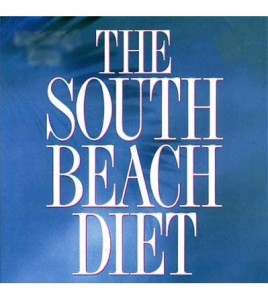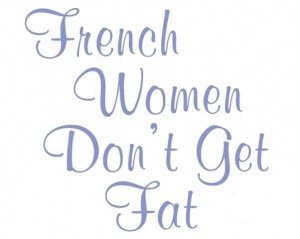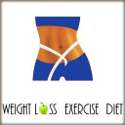-
How Diets Work and How to Make Them Work for You
Friday, April 26th, 2024by Melina Jampolis, M.D., Physician Nutrition Specialist
With all the diet books out there, as well as the seemingly endless supply of weight loss headlines on magazines, websites, and articles, it can be challenging figuring out the right diet for you. As a weight loss expert, it’s my job to keep up with the latest diet trends and to help people find the right approach for them to lose weight and keep the weight off.
If you are trying to find the right diet for you, it is important to understand the key concepts behind popular diet trends so that you can find an approach that fits your lifestyle and will work for you from a nutrition standpoint. Here are three diet trends to consider:
Low Fat Diets
(Ornish, Pritikin, American Heart Association, USDA)
 Low fat diets work because they cut calories without cutting portions significantly. Fat has more than double the calories per gram (measurement of weight) of protein or carbohydrates, so when you reduce fat significantly, calories are reduced too.
Low fat diets work because they cut calories without cutting portions significantly. Fat has more than double the calories per gram (measurement of weight) of protein or carbohydrates, so when you reduce fat significantly, calories are reduced too. In addition, these diets are generally very high in fruits and vegetables, both of which contain a significant amount of water and fiber which lowers the calorie density of foods allowing you to consume larger portions. These diets work well for people who don’t want to count calories religiously or eat bird-like portion sizes.
However, since these diets are often much higher in carbohydrates, they may not work as well for the apple-shaped dieter who tends to carry weight around the midsection. In addition, fat makes food taste good so low-fat diets are often less flavorful, which may not appeal to foodies.
Finally, if you lead a very active social life and eat out frequently, low-fat diets may be more challenging as low-fat restaurant options may be limited.
Low/Lower Carbohydrate Diets
(Zone, Atkins, South Beach)
 Low carb diets work for several reasons. First, they force the dieter to cut sugary, processed carbohydrates like baked goods, chips, bread, white rice, crackers, juice, and soda. These foods are easily over-consumed and can cause a rapid rise and fall in blood sugar which can lead to increased hunger and further overeating.
Low carb diets work for several reasons. First, they force the dieter to cut sugary, processed carbohydrates like baked goods, chips, bread, white rice, crackers, juice, and soda. These foods are easily over-consumed and can cause a rapid rise and fall in blood sugar which can lead to increased hunger and further overeating. Low carb diets replace carbohydrates with protein, which is more satisfying, and fat, which is more tasty, so dieters often find them easier to follow, at least in the short term. In addition, low carb diets offer less variety than low fat or portion control diets.
Research shows that decreased variety may improve weight loss. In general, this type of diet works best for apple-shaped dieters who tend to carry their weight around the middle.
However, cutting carbohydrates too much often leads to low energy and mood levels, particularly in women. In addition, the high level of saturated fat in the Atkins diet is unhealthy and may lead to poor health long term.
As with low fat diets, eating out may be challenging, although low carbohydrate options (protein + fat + double veggies) are more plentiful than low-fat options.
Low Calorie, Portion Control Diets
(Weight Watchers, Jenny Craig, French Women Don’t Get Fat)
These diets don’t limit any major food groups, making them more live able in the long term. Weight watchers relies on the point system, which factors in fiber and fat similar to low fat diets, but they offer more flexibility in terms of food choices.
By offering pre-packaged meals, Jenny Craig helps educate dieters about portion control without restricting any major food group, which can help prevent feelings of deprivation. However the portions can be rather paltry and the dieter must add fruits, vegetables, and low-fat dairy to ensure satisfaction and optimal nutrition.
 French Women Don’t Get Fat is a very good ‘diet’ for the foodie who eats out often. The diet is based on portion control and does not limit any major food groups.
French Women Don’t Get Fat is a very good ‘diet’ for the foodie who eats out often. The diet is based on portion control and does not limit any major food groups. This type of diet can be more challenging for those who are simply not satisfied by smaller portions or who find it difficult to control portions psychologically; however it is more live-able for someone who eats out often at high end restaurants or who enjoys cooking.
So, Which Diet is Best?
In my practice, I like to incorporate what I feel to be the key components of all of these diets. Here are three tips that are important no matter what diet you decide to follow:
- Replace some of the carbohydrates (bread, pasta, rice, cookies, crackers, potatoes) in your diet with lean protein (chicken, fish, low-fat dairy, beans, egg whites) to control hunger and protect calorie burning muscle.
- Double your vegetable intake. This is not only critical for controlling calories, it is also essential for optimal health. Aim for at least 2 ½ cups of vegetables per day and try to get as much variety as possible.
- Build in portion control wherever possible. No matter which diet you decide to follow, some degree of portion control is key, particularly when it comes to high fat foods like nuts, cheese, oils, high fat meats or carbohydrates like cereal, pasta, rice, and bread.
Keep a measuring cup in your cereal box or nut jar. Keep dressings and sauces on the side so you can measure out how much you put in your food. Buy foods in single serving portions when you can. Anything you can do to make portion control more automatic will help you lose weight and more important, keep the weight off!
For more useful information, follow me on www.facebook.com/drmelina or pick up a copy of my latest book, The Calendar Diet.
(published June 20, 2012)
 Dr. Melina Jampolis is a board certified physician nutrition specialist, the former host of Fit TV’s Diet Doctor, and the author of The Busy Person’s Guide to Permanent Weight Loss and The Calendar Diet. Specializing exclusively in nutrition for weight loss, disease prevention and treatment, Dr. Melina teaches a balanced and sustainable lifestyle-based eating and exercise program and has helped thousands of clients improve their health and well-being. She has a small private practice in Los Angeles and San Francisco.
Dr. Melina Jampolis is a board certified physician nutrition specialist, the former host of Fit TV’s Diet Doctor, and the author of The Busy Person’s Guide to Permanent Weight Loss and The Calendar Diet. Specializing exclusively in nutrition for weight loss, disease prevention and treatment, Dr. Melina teaches a balanced and sustainable lifestyle-based eating and exercise program and has helped thousands of clients improve their health and well-being. She has a small private practice in Los Angeles and San Francisco.


